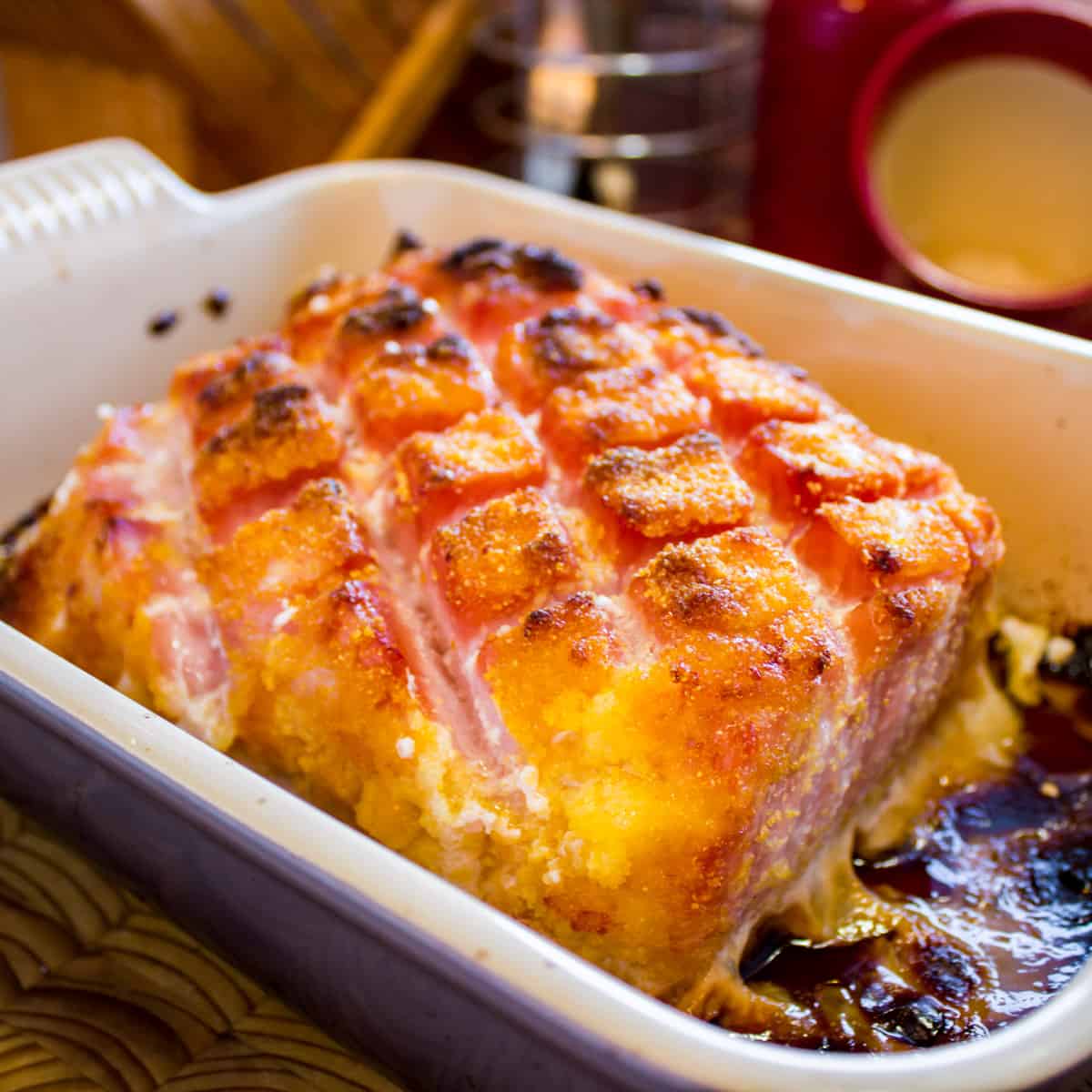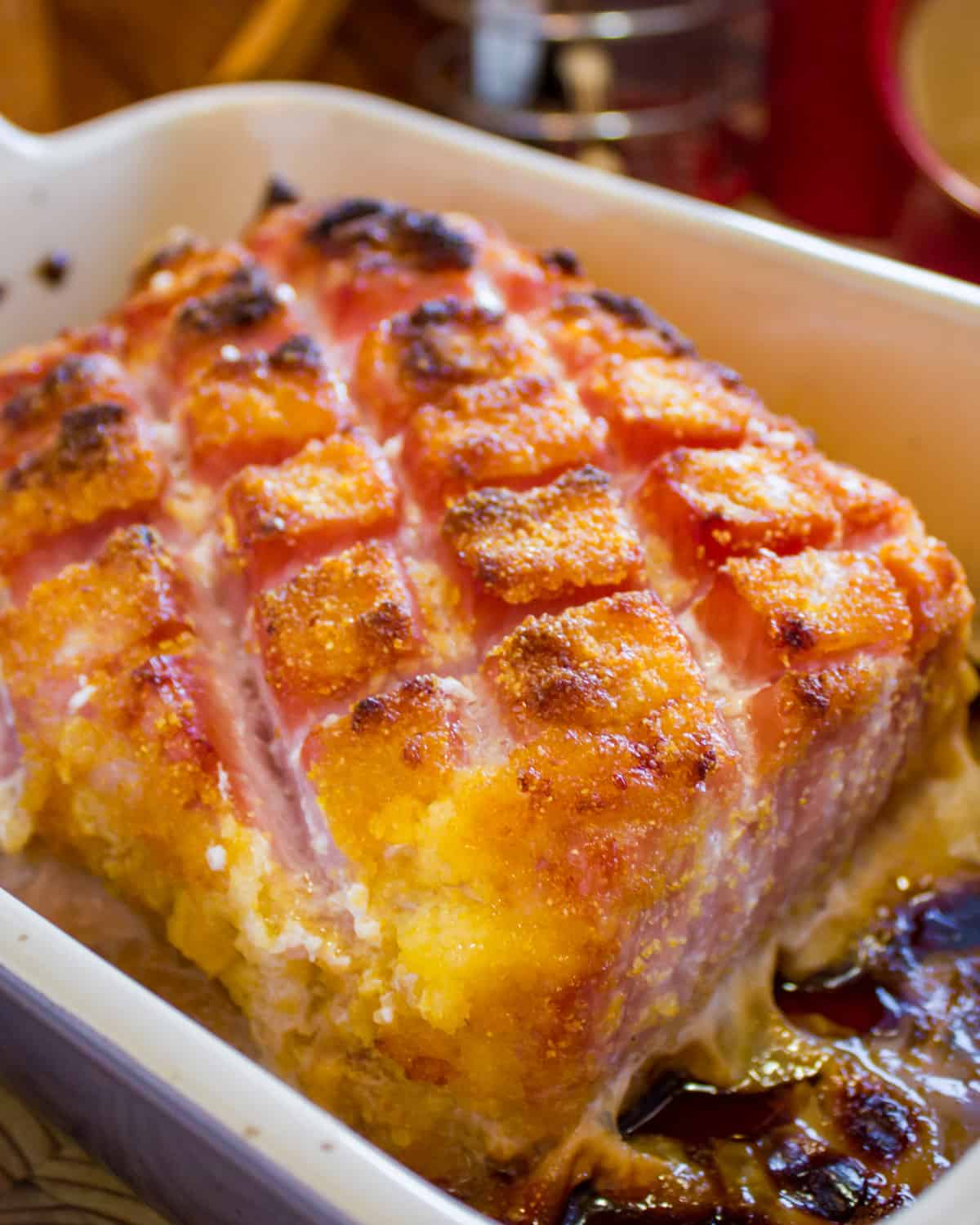I love peameal bacon. If I’m out to breakfast and the waiter asks if I want bacon, sausage, ham, or peameal, I almost always pick peameal bacon. Not only does this cut of meat taste great, but it is also better for you than regular bacon. Peameal bacon slices is just amazing on eggs benedict. So good!.
With its lean, tender texture and signature cornmeal coating, peameal bacon makes for an incredible breakfast or brunch. But cooking this Canadian delicacy can be tricky – it’s easy to under or overcook. So how do you know when peameal bacon is done to perfection? Here are foolproof ways to test for doneness when cooking peameal bacon.
What is Peameal Bacon?
Before jumping into cooking methods, let’s quickly cover what makes peameal bacon special. Peameal bacon comes from the pork loin which is brined and rolled in cornmeal (traditionally crushed yellow peas) before being sliced This gives it a distinct texture and flavor
Compared to regular bacon, peameal bacon contains less fat and more protein It has a lean, tender bite similar to a ham steak When buying peameal bacon, you can find it in roast form or presliced.
Cooking Methods for Peameal Bacon
There are several good cooking methods for peameal bacon:
-
Pan frying – The quickest method, frying peameal bacon slices on the stovetop leads to crispy edges and tender centers when done right.
-
Baking – Great for cooking a whole peameal roast, baking gives all-over even cooking with juicy results.
-
Grilling – For added smoky char, grilling peameal bacon imparts nice flavor. Needs monitoring to prevent burning.
-
Broiling – Broiling can mimic pan frying for crispy peameal bacon without the mess. Keep a close eye to avoid charring.
-
Microwaving – Fast but can lead to uneven cooking. If microwaving, use lower power and flip peameal halfway through.
No matter which cooking method you use, knowing when the peameal bacon is fully cooked is critical.
Doneness Tests for Pan-Fried Peameal Bacon
For pan-frying sliced peameal bacon on the stovetop, these visual cues indicate when it’s cooked properly:
-
Color – Look for golden brown edges and bottoms. The cornmeal coating should take on a crispy, browned appearance.
-
Curling – As it cooks, the bacon should start curling up on the edges. This shows the signature peameal bacon roll starting to take form.
-
Firmness – A fully cooked slice will feel firm yet still tender when poked with a fork or tongs, not mushy.
-
Sizzling – Listen for the sizzle to die down as most of the moisture cooks out. It should sound more fried than boiling.
When pan frying, cooking just 2-3 minutes per side is often enough for crispy, fully cooked peameal bacon.
Doneness Cues for Baked Peameal Bacon
For baking a whole peameal bacon roast, rely on these signs it’s ready:
-
Internal temperature – Use a meat thermometer to test the roast’s inner temperature. Peameal bacon is safely cooked at 145°F.
-
Cut test – Check for doneness by making a small slit with a knife tip. Well-done peameal will have just a hint of pink inside.
-
** Texture** – The meat should be fork tender and feel firm, not squishy when pierced.
-
Caramelized edges – Look for browned, slightly crispy edges around the outside.
Allow 15-20 minutes per pound for baking a peameal roast. For a 3 pound roast, expect around an hour of cooking time.
Doneness Factors for Grilled Peameal
When grilling peameal bacon slices or a whole roast, monitor these key factors:
-
Char marks – Look for nice grill marks to develop on both sides with some charred edges.
-
Firmness – Use tongs to feel that the bacon has firmed up versus feeling soft or mushy.
-
Internal temp – For a whole roast, aim for 145°F internally. For slices, cut to test for just a hint of pink.
-
Fat rendered – The bacon should release visible fat droplets and feel less greasy when fully cooked.
Grilling times vary based on thickness and whether cooking slices or a full roast. Plan on 7-10 minutes total for bacon slices.
Safety Tips for Cooked Peameal Bacon
When cooking any pork product, food safety is a must:
-
Cook to the proper minimum internal temperature (145°F).
-
Never let raw peameal bacon touches cooked meats.
-
Refrigerate cooked bacon within 2 hours.
-
Reheat fully when serving leftovers.
Following these doneness tips will ensure you safely enjoy the full peameal bacon experience. The sweet, cornmeal coated exterior and tender cured interior of peameal bacon really sing when cooked properly.
Common Mistakes to Avoid
It’s easy to over or undercook peameal bacon. Here are some common mistakes to sidestep:
-
Undercooking – Not cooking long enough risks illness from bacteria. Use a meat thermometer for roasts.
-
Overcooking – Too high heat or extended cooking time dries out the meat. Watch closely.
-
Uneven cooking – With quick-cooking methods, edges brown before center is done. Flip or turn peameal frequently.
-
Letting it stick – Getting good sear without sticking takes experience. Use medium heat and don’t move peameal until ready to flip.
With practice, you’ll become adept at achieving perfectly done peameal bacon every time.
Serving Suggestions for Cooked Peameal Bacon
Once you’ve mastered cooking peameal bacon, try serving it:
-
In breakfast tacos or burritos
-
On top of salads or baked potatoes
-
Chopped in omelets or frittatas
-
On a sandwich with lettuce, tomato and mayo
-
Crumble into soups like baked potato or chili
-
Pair with scalloped potatoes and roasted veggies
-
Cube and add to mac and cheese or baked beans
The possibilities are endless with this leaner, protein-packed alternative to regular bacon.
The Takeaway on Cooking Peameal Bacon
Knowing when peameal bacon is fully cooked requires paying attention to visual and textural signs. Testing temperature, monitoring curling and shrinkage, looking for crispness, and checking firmness will ensure your peameal bacon turns out perfectly cooked every time. While quick-cooking methods take some finesse, you can easily master the art of cooking peameal bacon using these handy tips.

What Is Peameal Bacon?
Peameal bacon is a cured boneless pork loin. When compared to what we usually call bacon, this very lean cut of meat has very little fat.
After the pork loin roast has been wet cured, it is rolled in corn meal. Peameal got its name from the fact that cured pork loins used to be rolled in ground dried yellow peas many years ago. The name has stayed the same, but the roast has been rolled in corn meal for a long time now.

Brush With Maple Syrup
The roast can be cooked the way it is, but I like to add maple syrup to the top. This sweetens the meat and creates a nice glaze on the outside of the meat. Use a light touch to cover the meat with maple syrup so that the peameal doesn’t come off. I only use maple syrup, but you could also add some spices.
Expert Tip! It is possible to rub the roast down with different seasonings, mustard, brown sugar and honey. You could use some seasoning like chipotle powder, paprika, black pepper, a hint of cinnamon, and more. There are so many possibilities.

